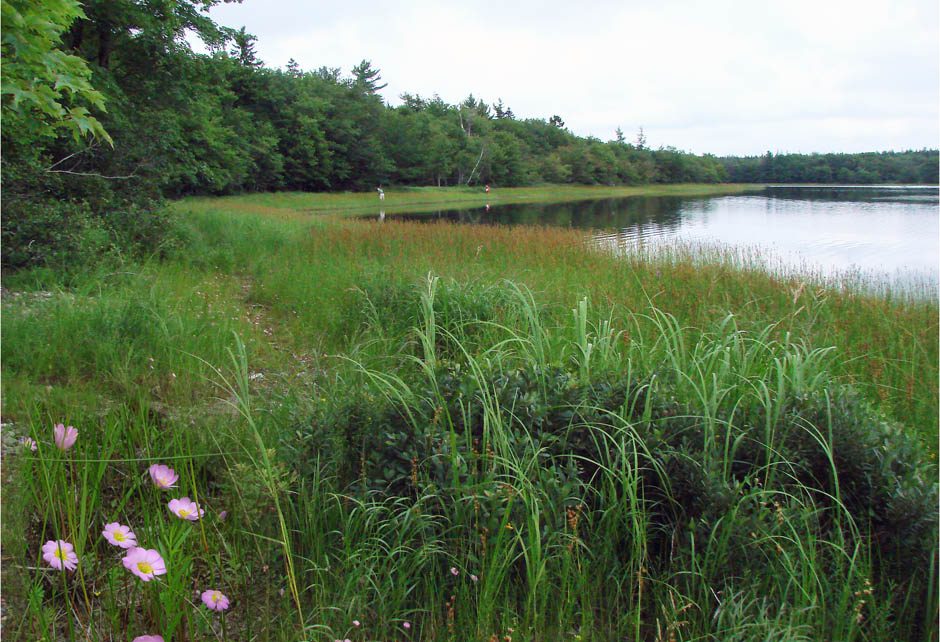Partial listing of past 2023 events
Monday Nov 27, 2023; at the Museum of Natural History, downstairs auditorium and via Zoom.
Nina Newington and other citizen scientists are playing a key role in the effort to protect the proposed Goldsmith Lake Wilderness Area in Annapolis County. To date they have identified 27 Species At Risk occurrences (principally lichens), halting logging operations for now. They recently discovered an area of old-growth forest where DNRR maps showed only forest under 80 years old. Nina will present an overview of their explorations and the Save Our Old Forests campaign which recently expanded to include Halifax County.
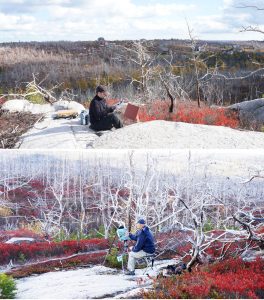
Geoffrey Grantham and Ron Kuwahara paint en plein air in the Jack Pine-Crowberry barrens on Nov 2, 2015, 6 years after 2009 ‘Spryfield Fire’.
Click on image for larger version
Mon Oct 23; Member’s Meeting via Zoom. Topic: Fires, Conservation and Fire Management in the Halifax Backlands
Online presentation by David Patriquin
The “Backlands”, located only a few kilometers from from peninsular Halifax, NS, are a Thompsonesque urban wilderness of approximately 1350 hectares which include nine lakes, hills with spectacular views and dozens of kilometers of informal hiking and biking trails. Erratic blocks, whalebacks and boulder fields are prominent features of the glacially scoured rocky landscape. It is also one of the most fire-susceptible landscapes in Nova Scotia, with recurrent fires pre-dating European settlement. One result is the presence of highly fire-adapted plant communities including the globally rare ‘Jack Pine/Broom Crowberry Barrens’.
David will describe the plant communities, their fire ecology, and discuss what’s involved in managing fire to conserve these ecosystems while at the same time protecting structures and people at the Urban-Wildland Interface.
For more about the area, visit www.backlandscoalition.ca.
David Patriquin, Professor of Biology at Dalhousie University (retired 2008) is involved in conservation-oriented activities with several local natural history, trail and environmental organizations.
To register for this event and receive a link for the Zoom session, contact novascotiawildflora@gmail.com
Monday September 25, 2023 at NS Museum & Online, 7:30 pm Sean Haughian (Botany Curator at NS Museum ofNatural History, Topic: The Laugavegur Trail of Iceland: A botanical journey. View Details
Saturday September 30, Rain Day Sunday Oct. 1 10:00AM Field Trip to Polly’s Cove. Leader Charles Cron View Details
Saturday Oct 14, 2023 Sandy Lake (Bedford) Old Forest Walk
Rain Date: Sun Oct 15, 2023. Forest Walk. View Details
Monday Oct 23: Online, 7:30 pm Speaker & David Patriquin, on Fires, Conservation and Fire Management in the Halifax Backlands
View Details
May 22 Outdoor LIVE Member’s Meeting – Herring Cove, 5:30pm
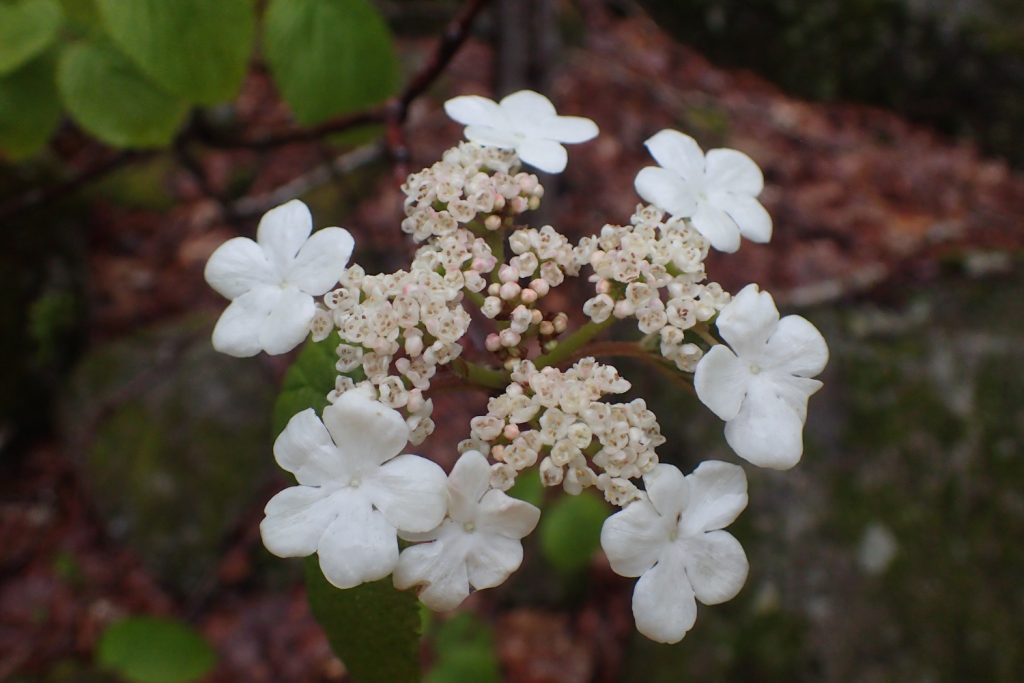
Hobblebush – Viburnum lantanoides Photo Bob Kennedy
We will have our first in-person meeting of the year on Victoria Day, May 22 at 5:30pm. We will meet in the parking lot near the Naval Firefighting School (Fleet School) at 31 Fire Rd near Herring Cove. Once everyone has arrived, we will discuss business then decide where we wish to head to – depending on the turnout and the majority opinions. The options include going towards the Pine Island Ponds or towards the York Redoubt. The focus will be on what plants we find coming out, but the local birds will be giving their evening songs as we explore.
To get there, from the Armadale Roundabout take the Herring Cove exit. Head up the hill for about 200m then take the left fork onto Purcell’s Cove Rd. Highway 253. Stay on the road for 9 km (which at some point turns into John Brackett Dr.), then turn left onto Fire Rd. where you will see the large school building. There is parking just as you enter Fire Rd.
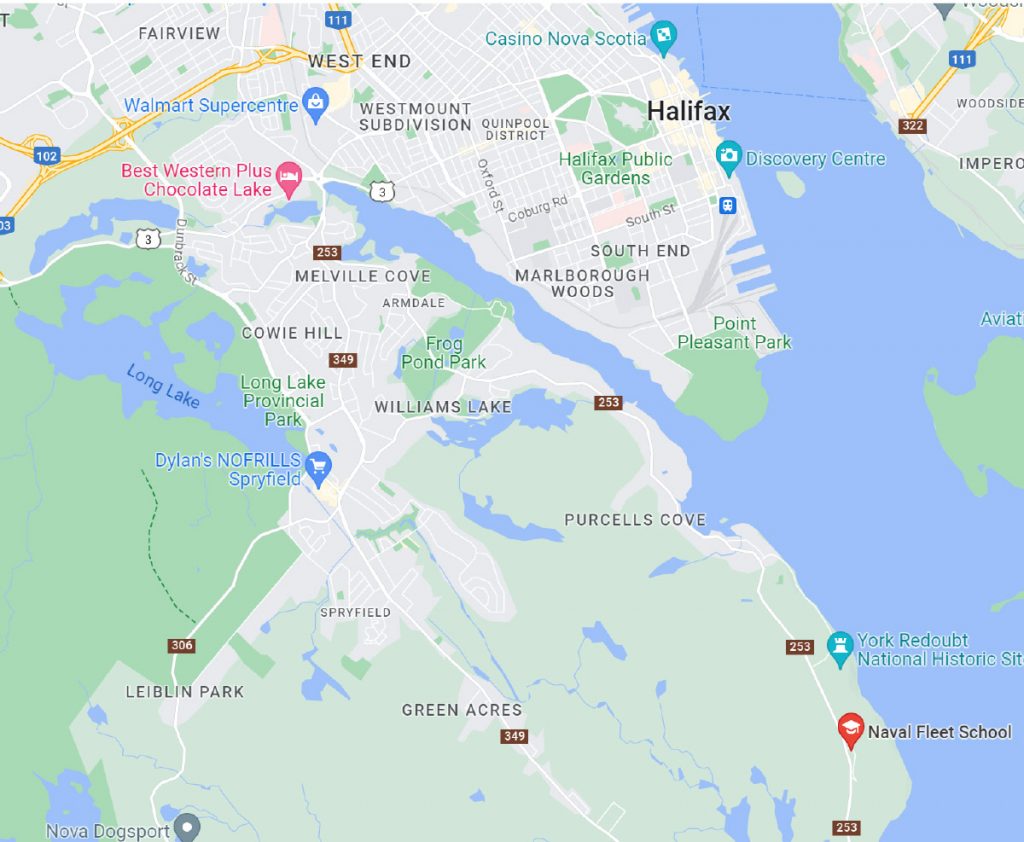
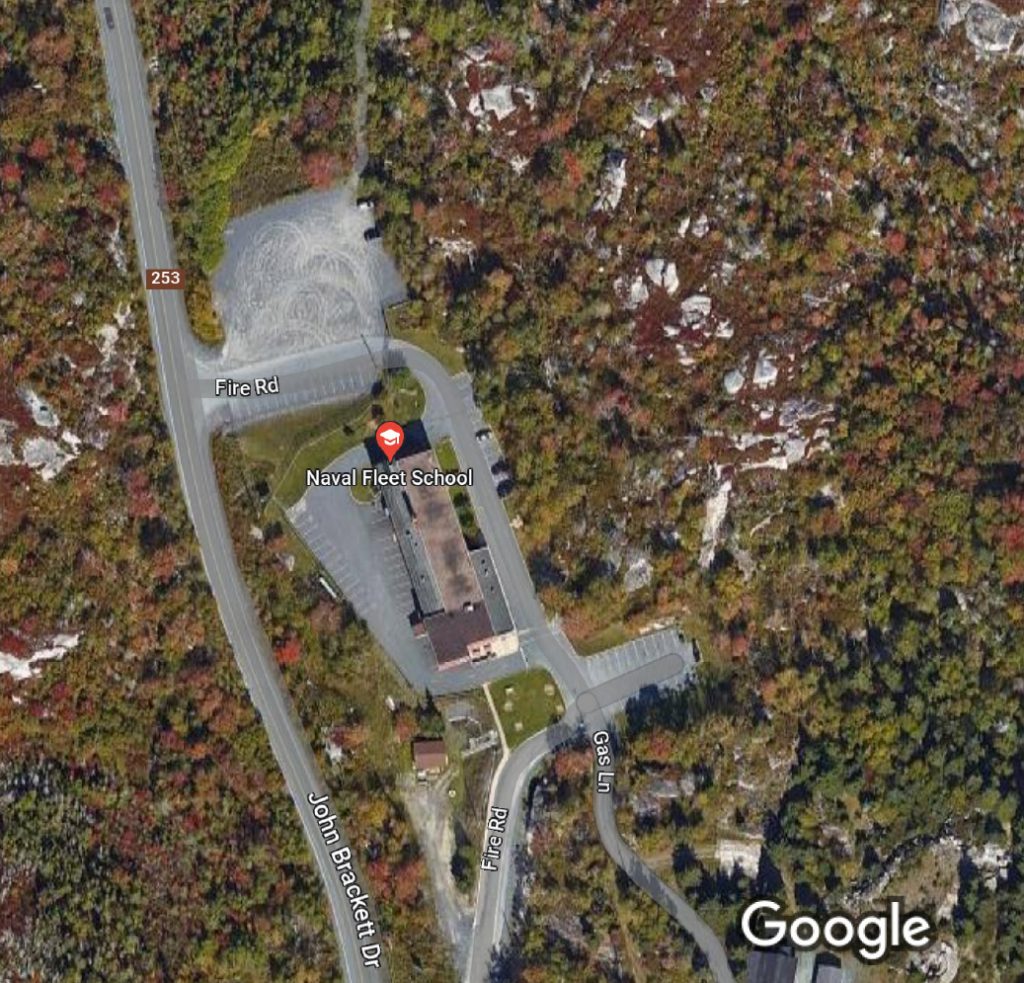
NSWFS Annual General Meeting – Apr 24 7:00PM
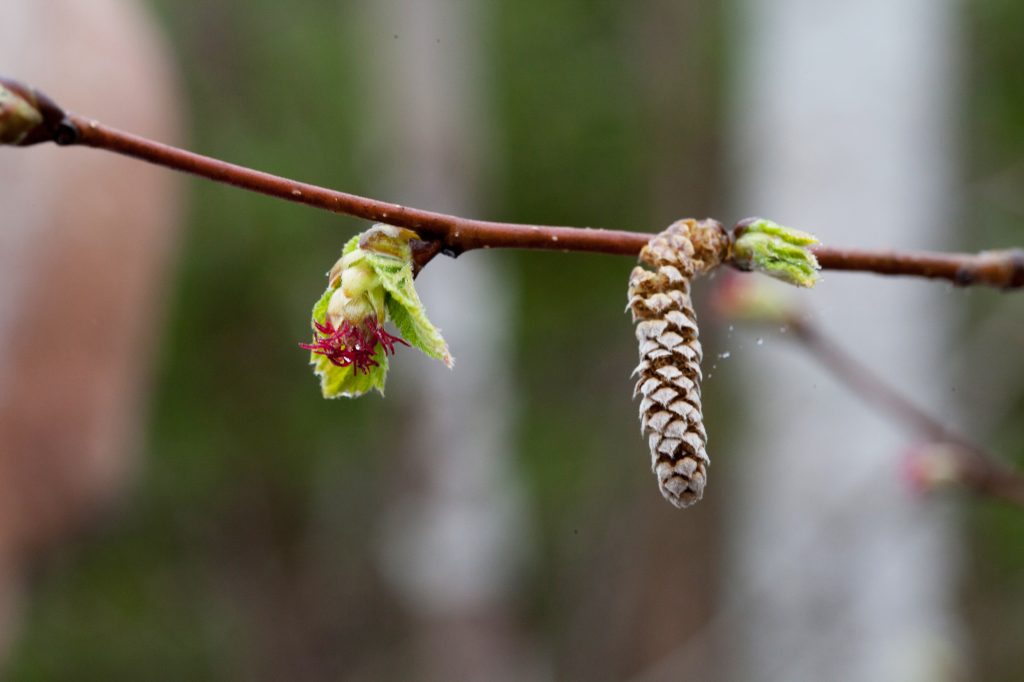
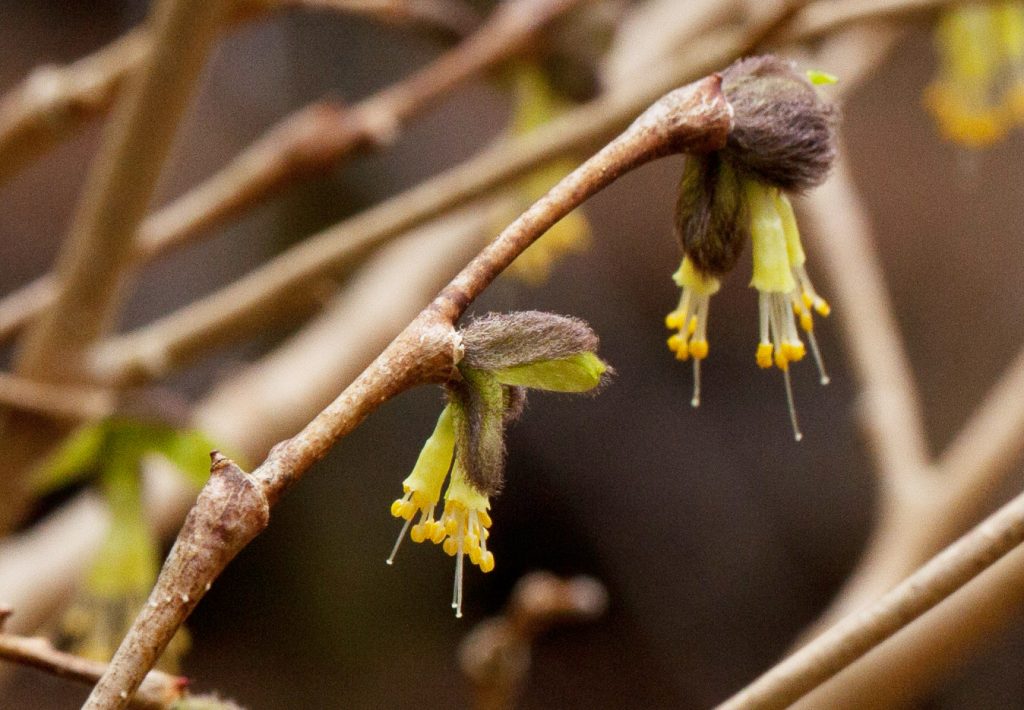
Beaked Hazel Corylus cornuta and Eastern Leatherwood Dirca palustris – Photos Bob Kennedy
Our 2022 AGM will take place Apr 24 at 7:00pm via Zoom.
If you are a NSWFS member, you should receive an email zoom invitation with attached agenda, financials and membership report. Please contact novascotiawildflora@gmail.com if you do not receive it.
Following the AGM, Burke Korol and Iain Crowell of the Atlantic Canada Conservation Data Centre will make a presentation of their most recent activities documenting the flora of the Maritimes.
Mar 27 Online Member’s Meeting – The Logic of Black Ash
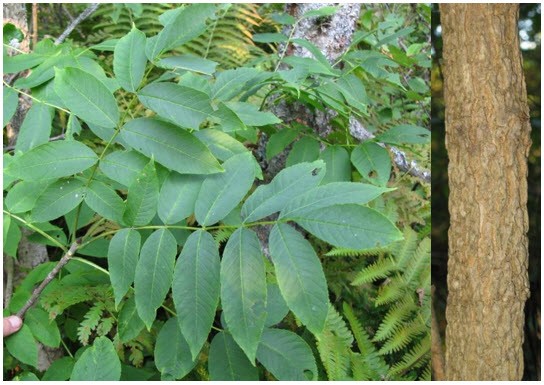
Our next member’s meeting is on Monday March 27, 7:00pm via Zoom. If you are an NSWFS member, you should receive an email towards the end of the week with a Zoom link to the meeting. If you do not receive it, please contact paris2@ns.sympatico.ca
Many people have never seen a black ash tree. As Ecologist Nick Hill says “truth told, I was in my fourth decade of Nova Scotian botanical fieldwork before I noticed one. Why?”
The black ash, “wisqoq” of the Mi’kmaq, can be large bottomland trees in the Great Lake states and along the St John River but there is only a scattering in Nova Scotia and they are rarest in the acidic southern uplands. Nick will summarize and interpret the findings of the latest field research and try to answer:
Why is the black ash rare?
How can it survive?
Nick Hill PhD has worked Post-Doctorate and as an Associate Professor in Botany/Ecology. He is currently a self employed Consultant Ecologist and has Adjunct Status at Dalhousie and St. FX Universities
He has been Project Coordinator for: 1. Bog Restoration, Globally Imperilled Avens, 2. Wetland delineation and assessment, 2. Botanical inventories (rare plants), 3. Ecological assessments , Monitoring, Restoration analyses, 4. Wetland training courses
Feb 27 Online Members Meeting:
Botanical Tales and Climate Change in Nova Scotia
Our next member’s meeting will be via Zoom at 7:00pm on Feb 27. Invitations will be emailed to members closer to the date.
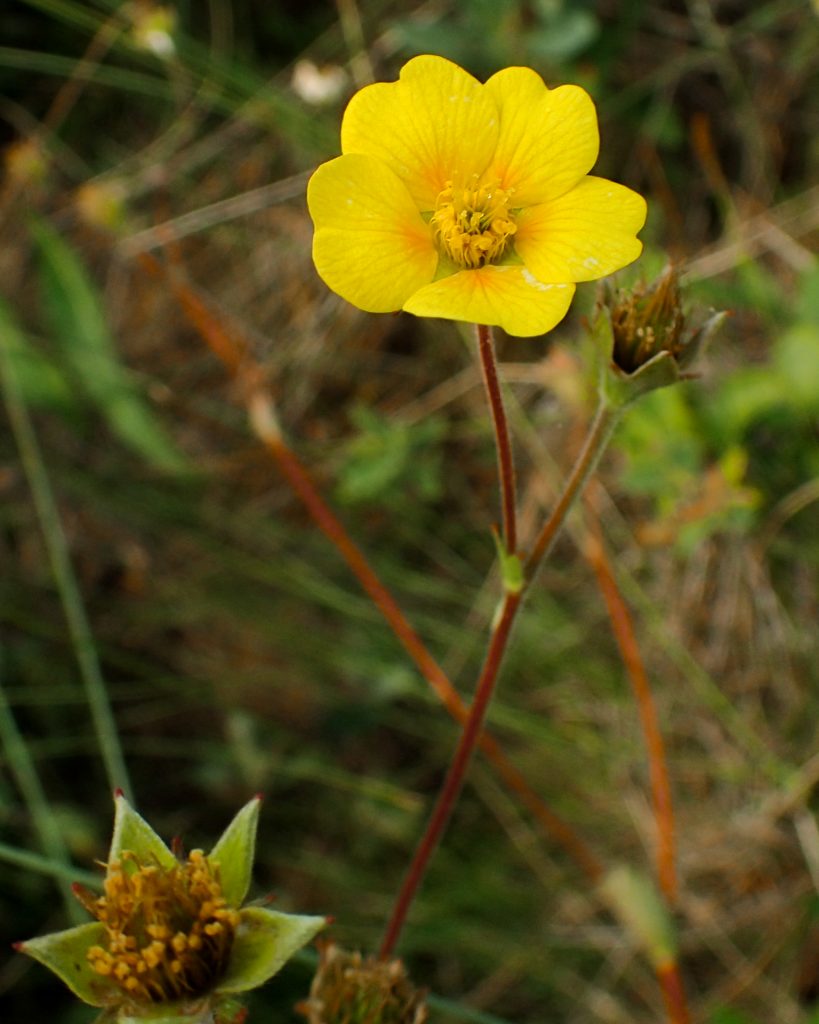
David Garbary is a Professor of Biology at St. Francis Xavier University in Antigonish. He will be giving a talk about climate change in Nova Scotia. This is from published work where Nick Hill and he looked at the temperature record for the province starting around 1960. He is then going to talk about wind and how storms have changed over the same period. This is new work that he is currently preparing for publication. He is then going to relate climate change to a couple of plant stories including late flowering plants, some changes in the seaweed flora, and the implications for Eastern Mountain Avens (Geum peckii).
Eastern Mountain Avens – Geum peckii Photo by Bob Kennedy
Born in Ireland, David arrived in Canada at the age of three. After brief stints in Toronto and Cape Breton David arrived in Wolfville where he completed high school (Wolfville and Horton District) and went on to both BSc and MSc degrees at Acadia University. With an aversion to animal dissection, he managed to complete his degrees without any animal biology courses. After mentoring by Darryl Grund (mycology), Sam Vander Kloet (plant taxonomy), and Jack McLachlan (phycology), David went to England to complete his doctorate at Liverpool University in seaweed taxonomy. This was followed by six years as a research associate at the University of British Columbia where he focused on the red algal flora. David arrived back in Nova Scotia in 1984 for a faculty position in plant biology at St. Francis Xavier University. Over his almost 50-year career he has taken up a wide range of topics including seaweed ecology, physiology, and cell biology, but with major departures into the evolution of land plants, flowering plant phenology, climate change, and seashore erosion. He has published over 200 papers and five books, and for six years was the editor of the international algal journal Phycologia. He enjoys mentoring students and introducing undergraduates to research. His favourite places in Nova Scotia are all seashores, especially Brier Island and Tor Bay. He enjoys collaborating with fellow botanist and wetland ecologist Nick Hill who inspired him to branch out to study rare species that grow in Nova Scotia wetlands.
